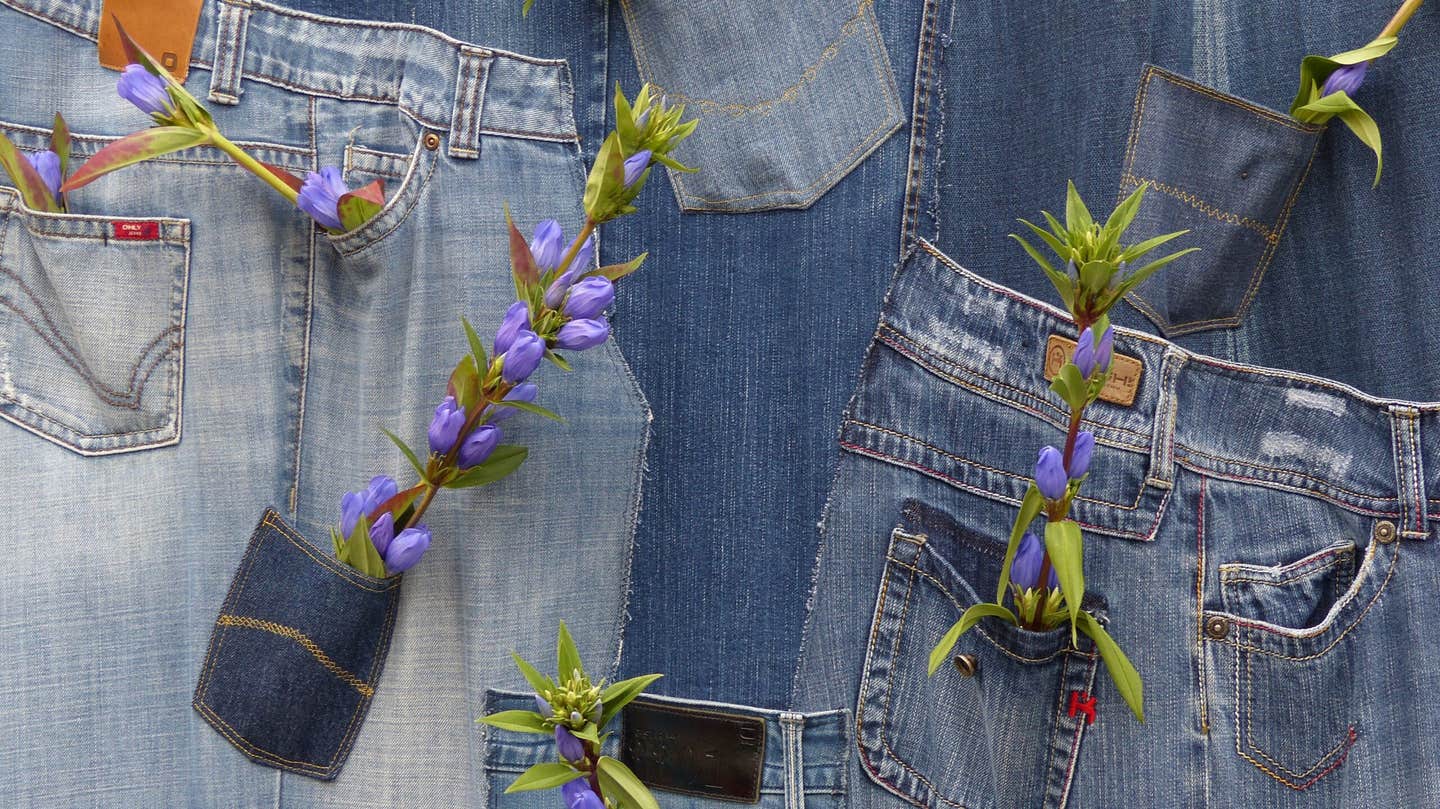Greener Jeans? Scientists Use Bacteria to Make Sustainable Indigo Dye
Researchers recently made a discovery that adds another point to the “good bacteria” category, and this time it benefits the denim industry.

[June 17, 2021: Liz Warren]
It’s a well-known fact in the scientific community that there’s both bad and good bacteria—some that cause various illnesses, and others that fight them. Researchers recently made a discovery that adds another point to the “good bacteria” category, and this time it benefits the denim industry.
Scientists from the Korea Advanced Institute of Science and Technology have discovered a way to produce indigo dye using bacteria. According to a study published in the ACS Sustainable Chemistry & Engineering journal, researchers were able to metabolically engineer corynebacterium glutamicum, a type of bacteria, to produce indigoidine, a natural blue dye that’s more sustainable than conventional indigo. After testing the dye on white cotton fabrics, they concluded that it has the potential to replace indigo.
This marks a cautious win for the denim sector, which is continuously seeking methods for more sustainable dyeing. Though indigo dye was originally extracted from the indigo plant, most of today’s indigo pigment is chemically synthesized, and not soluble in water. To be dissolved, it must undergo a chemical reaction called reduction, which uses sodium hydrosulphite, a corrosive salt that ultimately end up in the world’s waterways.
This is especially alarming when considering that 70,000 metric tons of indigo are used every year for denim products, according to German chemical supplier DyStar. The company addresses this issue with its Cadira Denim System, in which hydrosulphite is replaced with an organic reducing agent, Sera Con C-RDA, and combined with DyStar Indigo Vat 40% Solution to create what it calls the “cleanest indigo on the market.” The innovation has earned DyStar certifications from Bluesign, Cradle to Cradle, the Global Organic Textile Standard, Oeko-Tex and ToxFMD.
Others such as Swiss chemical companies Archroma, the makers of Denisol Indigo Pure Indigo 30, and Sedo Manufacturing, the developers of Smart Indigo, set their sights on indigo powder to mitigate its potential for environmental harm.
Fashion biotech startup Huue (previously called Tinctorium) also skirted the reduction process with its biologically synthesized indigo. Rather than use petroleum sources, the firm engineers microbes to mimic how an indigo plant makes green leaves that turn blue when crushed. The innovation caught the attention of House of Gold founder and godfather of denim Adriano Goldschmied, who later joined the company’s advisory board in a “hands-on” role to help with the creation and implementation of denim products made with their biologically-engineered indigo dye.
Producing indigo from bacteria is not a new concept. Last year, Dutch fashion project Living Colour, which explores eco-friendly alternatives to artificial dyes, developed a method to dye textiles using bacteria, which are fed a nutrient enabling them to produce a pigment that can be used to color fabrics. This process uses no hazardous chemicals and consumes less water and energy compared to traditional methods. The company’s founders also studied the efficacy of using sound waves on bacteria to create patterned textiles.
Like these kind of feel good stories? Get the Brighter Side of News' newsletter.
Tags: #Green_News, #New_Innovation, #Bacteria, #Denim, #The_Brighter_Side_of_News



